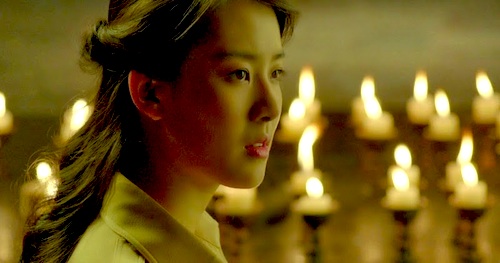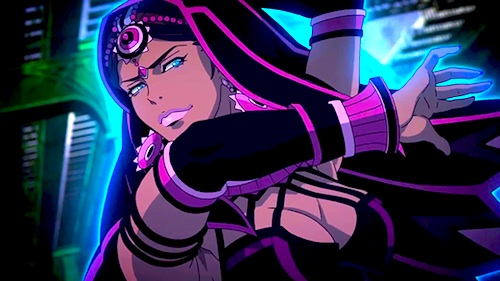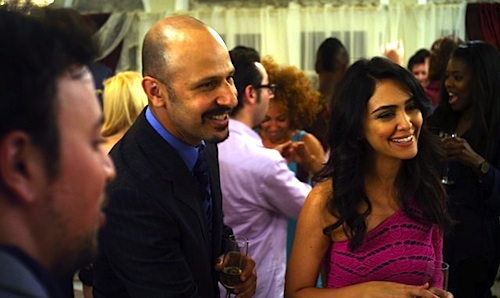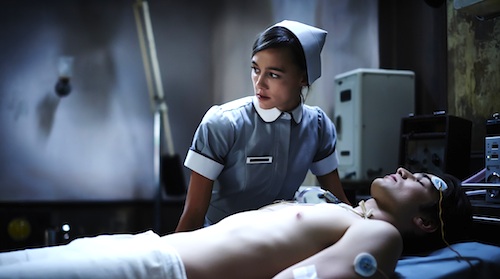By Joe Bendel. Love hurts, yeah, yeah. For young Jack, it can be downright deadly. That is because his ticker literally ticks. Born on Edinburgh’s coldest day ever, Jack’s heart was frozen solid and had to be replaced with the titular timepiece. His adopted mother warns him not to fall in love, lest it overwhelm his cardiac gears, but fate has other ideas in Mathieu Malzieu & Stéphane Berla’s Jack and the Cuckoo Clock Heart, which screens during the 2014 New York International Children’s Film Festival.
It takes a certain kind of woman to successfully replace a heart with a cuckoo clock. Convinced Madeleine, the midwife with a wiccan-ish reputation, will be a better parent to the boy, his overwhelmed birth mother abandons Jack in her care. She subsequently drills the rules of cuckoo clock maintenance into his skull full of mush: don’t touch the hands, don’t lose his temper, and never ever fall in love. However, he nearly loses it when it first sees Miss Acaia, a young flamenco singer, performing in the city square.
For years, Jack must endure the bullying of his romantic rival while separated from his true beloved. However, when trouble forces him to leave Edinburgh, Jack sets off in search of Miss Acaia. He is encouraged and accompanied on this quest by his new friend and heart-tweaker, the tinkering future pioneer of filmmaking, Georges Méliès. Eventually, they find Miss Acaia performing in Andalucía, which is a giant carnival in Malzieu’s macabre world, but unfortunately Jack’s nemesis follows closely behind them.
Based on the concept album and children’s book by Malzieu, the frontman of the surrealist rock band Dionysos, Cuckoo is an odd bird by any objective measure. It is sort of like Hugo reconceived by Edward Gorey, with a dash of The Who’s Tommy mixed in for extra strangeness. Much like “children’s books for adults” (a category of publishing that probably applies to Malzieu’s chapter book), the film version is really a child’s animated parable for adults. Frankly, the film ends on a lyrically poetic note, but it will not be a crowd-pleaser for younger audiences.
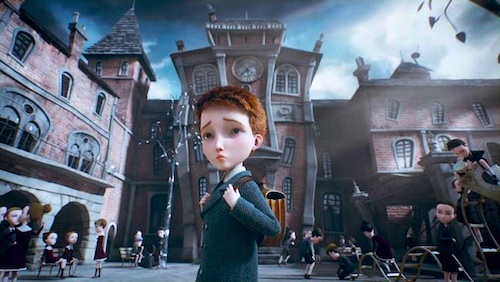
So who is it for? Maybe fans of Méliès, Gorey, Tod Browning, Tim Burton, Charles Adams, Jack the Ripper films (yes, he makes a strange appearance), and Les Miz’s Samantha Barks, who provides Miss Acaia’s voice for the English language soundtrack (and quite nicely so). You know who you are.
Cuckoo’s computer generated animation is quite striking and richly detailed, in a darkly ominous way, and Malzieu’s songs have more substance than one would expect from an animated film (recent Oscar winners not excluded). Nevertheless, parents should fully understand this is a fable, not a fairy tale. Malzieu and Berla fully deliver on their early promise of romantic tragedy.
Cuckoo is an elegant concoction of distinctive music and visuals, but it will be daunting marketing challenge for its American distributor. Recommended for connoisseurs of sophisticated animation, Jack and the Cuckoo Clock Heart screens again next Saturday (3/22) at the SVA Theater, as this year’s NYICFF continues at venues throughout Manhattan.
LFM GRADE: B+
Posted on March 19th, 2014 at 11:04am.
